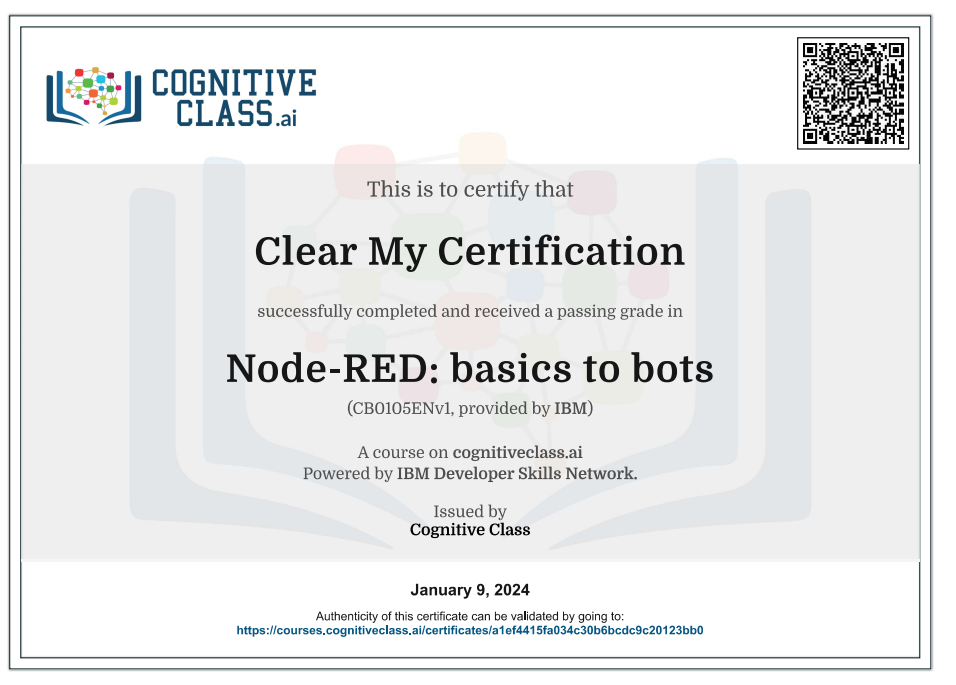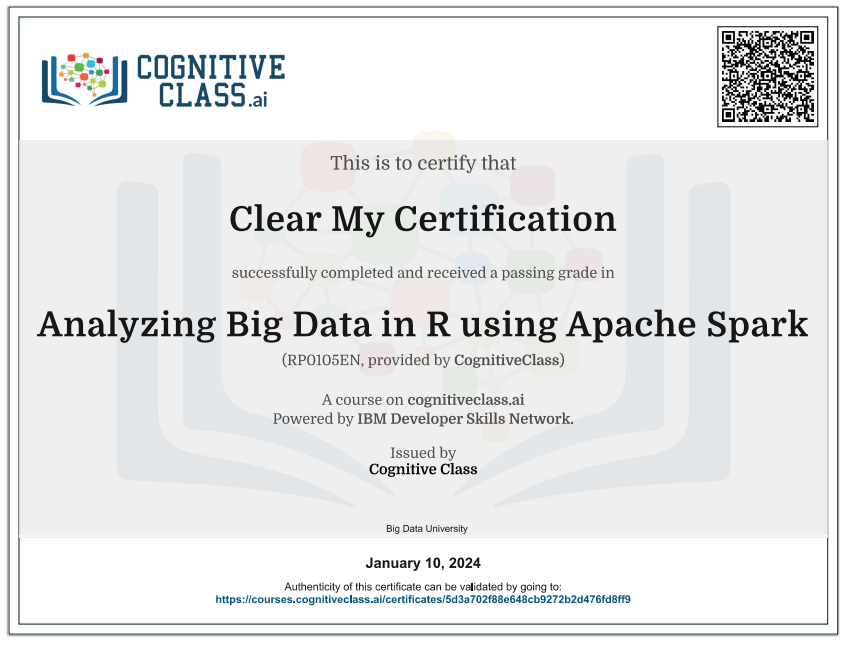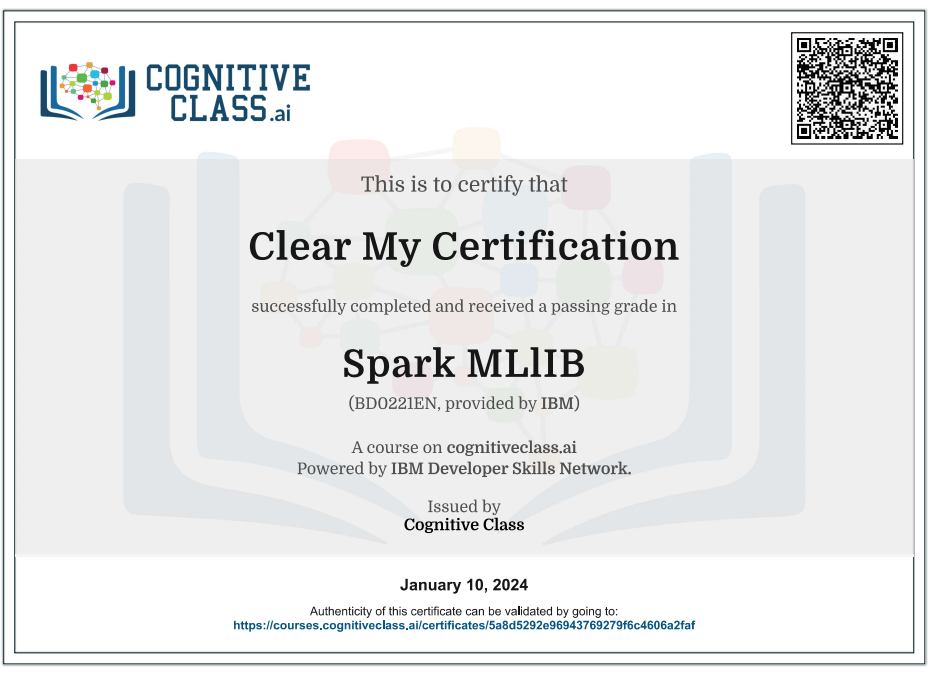Enroll Here: Node-RED: basics to bots Cognitive Class Exam Quiz Answers
Node-RED: basics to bots Cognitive Class Certification Answers

Lab 1 – Create Your First Node-RED Flow Quiz Answers – Cognitive Class
Question 1: You can run Node-RED on the IBM Cloud without installing it locally on your computer.
- True
- False
Question 2: You can connect services like Watson Assistant to a Node-RED instance running on IBM Cloud.
- True
- False
Question 3: The three main types of nodes are Input, Output, and Objects.
- True
- False
Question 4: You use the Debug tab in the flow editor to read the documentation for a node.
- True
- False
Question 5: An inject node is a type of input node.
- True
- False
Lab 2 – Build a Web Page and Create a REST API in Node-RED Quiz Answers – Cognitive Class
Question 1: The HTTP In node can be used to create URLs for web pages and APIs.
- True
- False
Question 2: A function node can be used to process the output of a node before feeding it in input to another node.
- True
- False
Question 3: Node-RED offers a Template node.
- True
- False
Question 4: Template nodes can contain JavaScript code.
- True
- False
Question 5: language identify is a node made available by the Watson Language Translator service.
- True
- False
Lab 3 – Translate text, analyze tone, add audio, and send tweets from your Node-RED Application Quiz Answers – Cognitive Class
Question 1: You can add more functionalities by leveraging nodes from both the Node-RED project and the wider community.
- True
- False
Question 2: Microphone and speaker nodes are available through community libraries.
- True
- False
Question 3: The Node-RED community has created nodes for every possible need.
- True
- False
Question 4: For the language translator node to become available, you can use API keys to access the service or connect (bind) the service.
- True
- False
Question 5: We can use a function node to process the output of a node, preparing it for the expected input of a different node.
- True
- False
Lab 4 – Create Cognitive Webpages and Messenger Bot Quiz Answers – Cognitive Class
Question 1: Community nodes are the only way to integrate with third-party web services.
- True
- False
Question 2: You can import a JSON flow from your clipboard into Node-RED by clicking Import > Clipboard.
- True
- False
Question 3: Integrating Facebook Messenger in your Node-RED application requires that you first obtain a Page Access Token and Verify Token from Facebook.com.
- True
- False
Question 4: The facebook messenger node can only read messages from Facebook Messenger, not write them.
- True
- False
Question 5: We can transcribe and translate captions for a video by leveraging Watson Speech to Text and Watson Language Translator.
- True
- False
Lab 5 – Build HTML Web pages that use Git Respositories that can Reuse brower-side JavaScript Quiz Answers – Cognitive Class
Question 1: You can pass a video file straight into the Speech to Text Service
- True
- False
Question 2: The HTTP input node is limited to GET requests.
- True
- False
Question 3: There are three HTTP core nodes, http (input), http responde (output), and http request (function).
- True
- False
Question 4: The http input node is used to send HTTP requests.
- True
- False
Question 5: The http request node is used to send HTTP requests.
- True
- False
Node-RED: Basics to Bots Final Exam Answers – Cognitive Class
Question 1: What do you use the inject node for?
- Inject a file
- Initiate a flow
- Define an HTTP route
- As a camera
Question 2: The Watson Language Identify node expects its input text to be provided in what object?
- msg.lang
- msg.languages
- msg.payload
- msg.input
Question 3: For Node-RED on IBM Cloud, how do you install additional nodes?
- Add new dependencies in package.json
- Add new dependencies in manifest.yml
- Add new dependencies in settings.js
- Add new dependencies in red.js
Question 4: What can you use function nodes for?
- Define HTML templates
- Create virtual wires between flows
- Create JavaScript code blocks
- Define new nodes
Question 5: The Watson Speech to Text node outputs to which object?
- msg.transcription
- msg.payload
- msg.translation
- msg.result
Question 6: What are the three main categories of nodes?
- input, inject, function
- storage, input, output
- input, output, function
- analysis, advanced, output
Question 7: In this course, the microphone node from Lab 3 is available as a core Node-RED node.
- True
- False
Question 8: What does the Watson Tone Analyzer service do?
- Analyzes emotions, such as happy, sad, confident, anger, in text
- Predicts personality characteristics, such as needs and values, in text
- Looks for trends and patterns in text
- Analyzes text to extract metadata from content such as concepts, entities, keywords, categories
Question 9: The http request node is used to send HTTP requests.
- True
- False
Question 10: Node-RED is based on which programming language?
- Python
- Ruby
- Java
- Node.js
Introduction to Node-RED: basics to bots
Node-RED is a flow-based development tool for visual programming. It is often used for Internet of Things (IoT) applications, but it can also be employed for various other purposes, including creating chatbots. Here’s a basic guide on how to use Node-RED to build a simple chatbot:
1. Install Node-RED:
- Node-RED is typically installed as a Node.js module.
2. Run Node-RED:
- After installation, you can start Node-RED
- Access the Node-RED editor by opening your web browser and navigating to
http://localhost:1880.
3. Nodes in Node-RED:
- Nodes are the basic building blocks in Node-RED. They represent individual operations or functions.
- You can find nodes on the left sidebar, and you drag them to the workspace to create a flow.
4. Creating a Simple Flow:
- Drag an “inject” node to the workspace. This node can be used to trigger events.
- Connect the “inject” node to a “function” node. The “function” node allows you to write JavaScript code.
- Connect the “function” node to a “debug” node. This node outputs information to the Node-RED debug panel.
5. Writing JavaScript in Function Node:
- Double-click on the “function” node to edit the JavaScript code.
6. Deploy the Flow:
- Click the “Deploy” button in the top-right corner to deploy your flow.
7. Testing the Flow:
- Click the inject node, and you should see “Hello, world!” in the debug panel.
8. Adding Chatbot Functionality:
- To create a chatbot, you might want to integrate with a messaging platform or use the built-in dashboard in Node-RED.
- For messaging platforms, consider using nodes like “http in” and “http response” for handling webhooks.
- Install additional nodes like “node-red-contrib-chatbot” for more advanced chatbot capabilities.
9. Integrating Natural Language Processing (NLP):
- For more sophisticated chatbots, you can integrate with NLP services like Dialogflow, Wit.ai, or Microsoft LUIS.
- Use relevant nodes or write custom JavaScript to handle interactions with these NLP services.
10. Deploying the Chatbot:
- Once you’re satisfied with your chatbot flow, deploy it, and your chatbot will be active and ready to respond.
Remember to explore the Node-RED documentation and community for more details and advanced features. This is a basic guide, and you can extend the functionality based on your specific requirements.
 Clear My Certification All Certification Exam Answers
Clear My Certification All Certification Exam Answers



